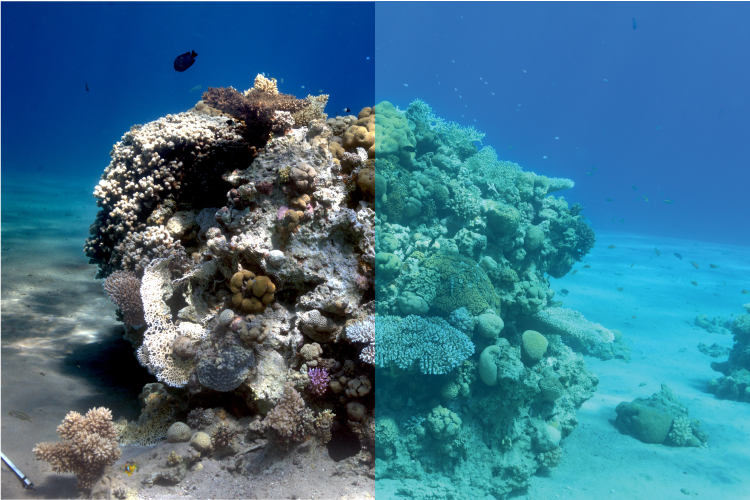6/30/2020
Seeing Through the Sea
Sea-thru a Physics-based Approach to Enhance Underwater Images
By Cammi Clark, Ph.D.
Derya Akkaynak, Ph.D., an oceanographer and engineer at FAU Harbor Branch Oceanographic Institute, has recently been invited to speak worldwide on her research of how vision works underwater.
“I am interested in how vision works underwater, and for that, I need to understand how light moves in the water and what kind of changes happen to it when it interacts with tiny particles suspended in it,” she said. “Imagine the crystal clear waters of the Pacific ocean, and then think of the brown, murky waters of the Indian River Lagoon. These water bodies have different optical properties and will create a different visual experience for the animals that live in them – or for our cameras when we try to image underwater.”
Akkaynak has a master's in aeronautics and astronautics from Massachusetts Institute of Technology (MIT), and a doctorate degree in oceanography from a joint program between MIT and Woods Hole Oceanographic Institution.
FAU is Akkaynak’s third postdoc fellowship. Her first was in Eilat, on the shores of the Red Sea, Israel, developing the color reconstruction program called Sea-thru, a project that uses a physics-based approach to enhance underwater images, reducing the tedious and manual labor it takes to render a clear underwater image.
“I see Sea-thru as my most significant achievement so far because it paves the way for marine scientists to use artificial intelligence methods more efficiently on underwater images, reducing the amount of tedious (and expensive) manual labor it currently takes. Which means, we will learn more about our oceans faster,” she said. “Sea-thru shows us the underwater world in a way we have not seen before, so it has sparked quite a bit of interest from the general public as well – especially from folks who have never dived or snorkeled and never experience the underwater world in person. We protect what we love, so I really hope Sea-thru can play an important role in our understanding, appreciation, and conservation of the oceans.”
She was also a postdoc at Princeton in New Jersey, where she studied the visual ecology of seabirds.
Akkaynak said she was drawn to FAU because of the optical sensing group, run by Michael Twardowski, Ph.D., a research professor at Harbor Branch, which is considered one of the world's leading lab in research in the optical properties of natural water bodies.
If you would like more information, please contact us at dorcommunications@fau.edu.
